This is Part 2 (Part 1 here) of our trip from Tarapoto to Villa Rica, and then onto San Ramon (and then to Lima.) In search of specialty coffee, and to participate in the Curibamba Coffee workshops for growers in the communities above San Ramon Peru.
Tingo Maria to VIlla Rica
We’re up early, and heading out the door at 7:00 am to try and get a good start towards VIlla Rica. It’s a long journey, and though we’re hopeful that the roads will be good, we know that the rains have done a lot of damage this year (see here and also here for more about the flooding in Peru this year.)
There’s no “direct” auto service (colectivo) to Villa Rica, so we’ll have to take several cars in order to get there. We arrive at the agency via mototaxi, and load our bags into the first of what will be eventually four different cars to reach Villa Rica.
It’s a little chilly this morning as the “winds of San Juan” have been blowing from the south these last few days, and nighttime temperatures are the coolest of the year. After all, it is the winter solstice. (See here for info about Inti Raymi – the Solstice celebration.)
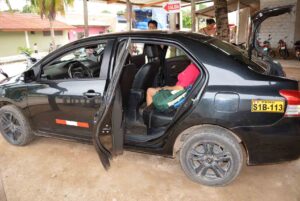
Our first stop isn’t in a named city, but just referred to as “kilometer 86.” It takes about three hours to get there. Most of the road is actually pretty good for this stretch, and the scenery is gorgeous. The morning coolness and mist around all of the mountains gives way to a bright sunny day with big puffy clouds.
We arrive and head for a restroom, and try to grab a quick bite. As we start to eat the driver appears, and it’s time to go, as the car is full. We quickly gather up our stuff, and we’re off. This is a good situation; a colectivo passengers’ worst nightmare is waiting and waiting hours for the next passengers to show up.
Soon, we’re off the good roads and onto a narrower dirt road, and while many parts are good, there are sufficient holes that we end up swerving around a lot, and coming to a complete stop often as yet another big truck passes on the other side of the narrow road. Each side is lined with a steep ditch, so a mistake could be problematic.
Another three hours passes, as we gradually wind down into the low rain forest from the higher altitude cloud forest of Tingo Maria. The temperature rises, and the scenery presents more cacao, rice, papaya, and banana farms.
We arrive in Puerto Inka, and after changing cars again, we’re back on the rough road to Constitución, where we’ll change to the final car to Villa Rica. It’s hot in Constitución, that low jungle high humidity kind of hot, and we’re the only passengers waiting to go.
Well, it’s lunchtime, so we both get a takeout of chicken, rice and yuca. The food is surprisingly good from the modest looking kitchen, and we hungrily eat it in short order.
We settle in for what appears to be a long wait. Luckily, after about 45 minutes, a Toyota pickup arrives with a full load of finished wood in the back. We negotiate passage to Villa RIca, and we’re on our way.
The colectivo agency wasn’t very pleased to lose us as customers, but we still hoped to make it before nightfall. It was a slightly tense situation as we had to physically get our bags from the trunk of the colectivo to the big Toyota Hilux pickup, and we were somewhat blocked trying to get out. Nothing bad happened though, and with our stuff in the pickup, we headed out on the final leg of the journey.
Alas, it was long dark by the time that we arrived. We made our way to the hotel, and after checking in, grabbed a bite and called it a day. Total travel time Tingo Maria to Villa Rica including stops – 12 hours.
We head up for an early bed. Tomorrow is a big day at Chacra D’dago.

Chacra D’dago
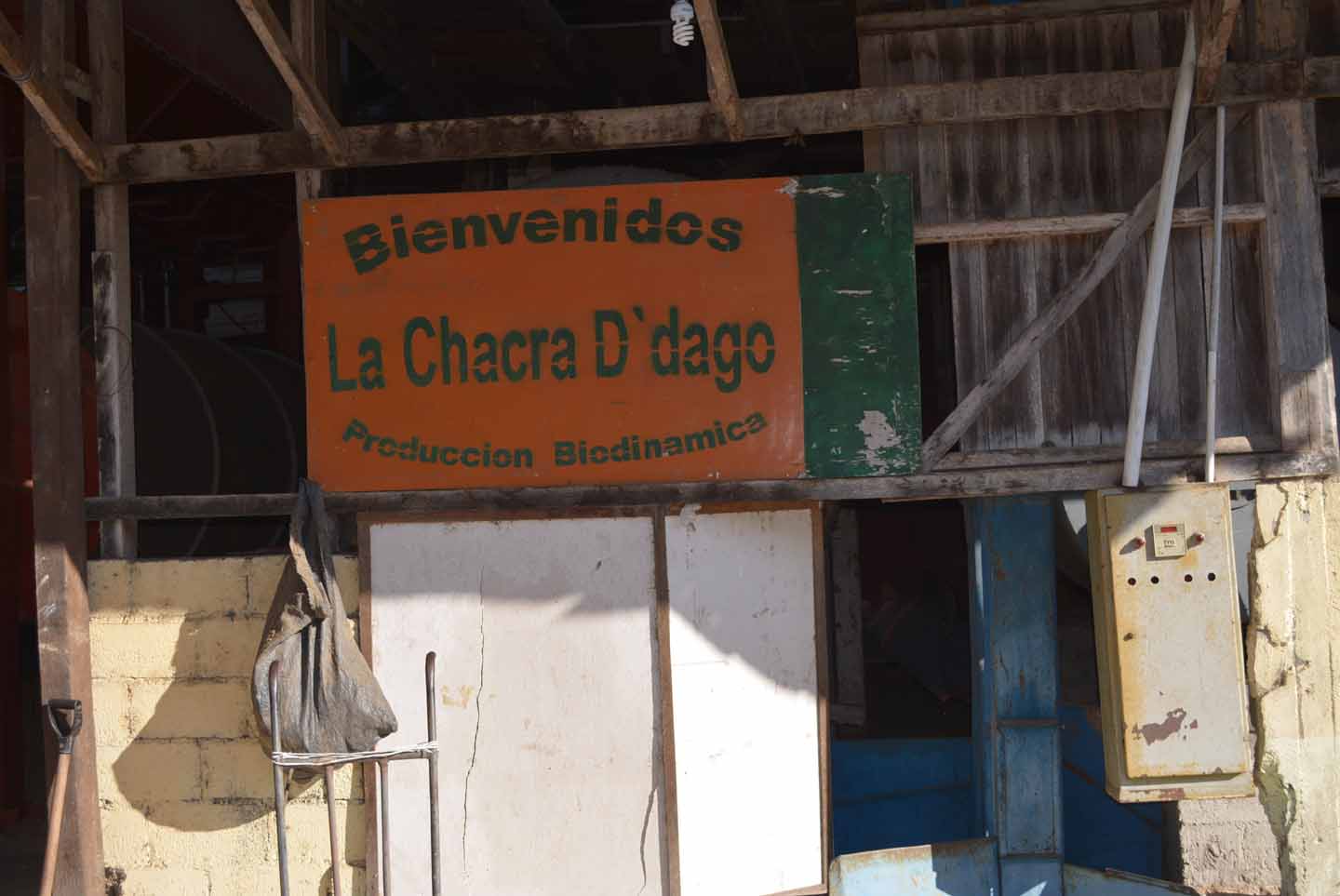
In the morning there are several urgent errands to try and accomplish via email/phone. I quickly find that none of the locutorios (where one can make a phone call) are functioning today (at least to call the States.) After a stressful couple of hours tying to get a decent enough connection to make necessary emails, I finally get everything finished and we head off to Chacra D’dago.
Things do not always go smoothly in the more remote areas, and internet is what also powers the long distance phone shops, so when it’s down or degraded, it’s hard to get much done. It’s easy to take it for granted, but out here it’s not always working.
The road crews are working on the stretch to Chacra D’dago, so our taxi takes us to about 5 kilometers short of the farm, where’ we’ll have to cross with our stuff & what for Cesar Marin to come and pick us up.
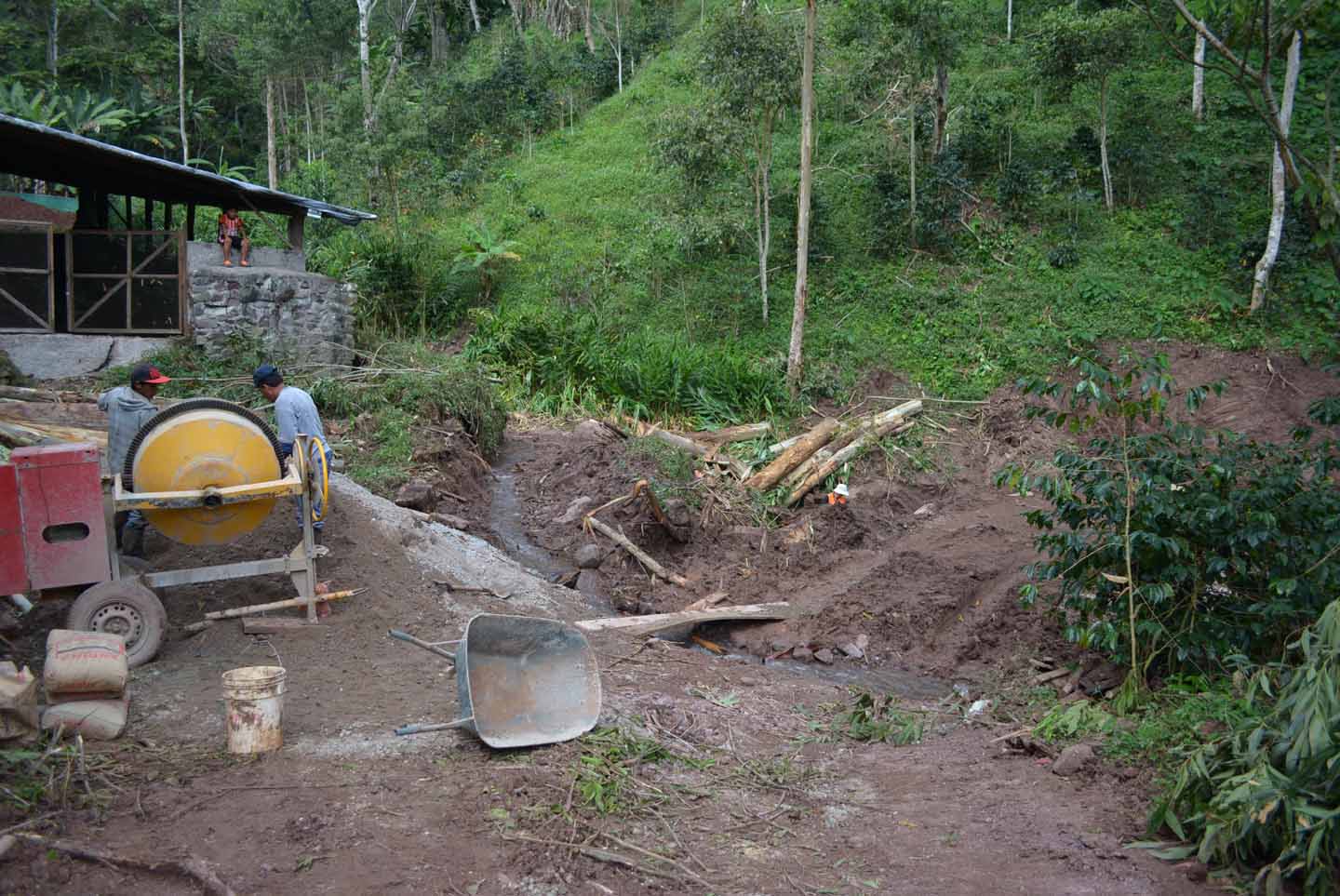
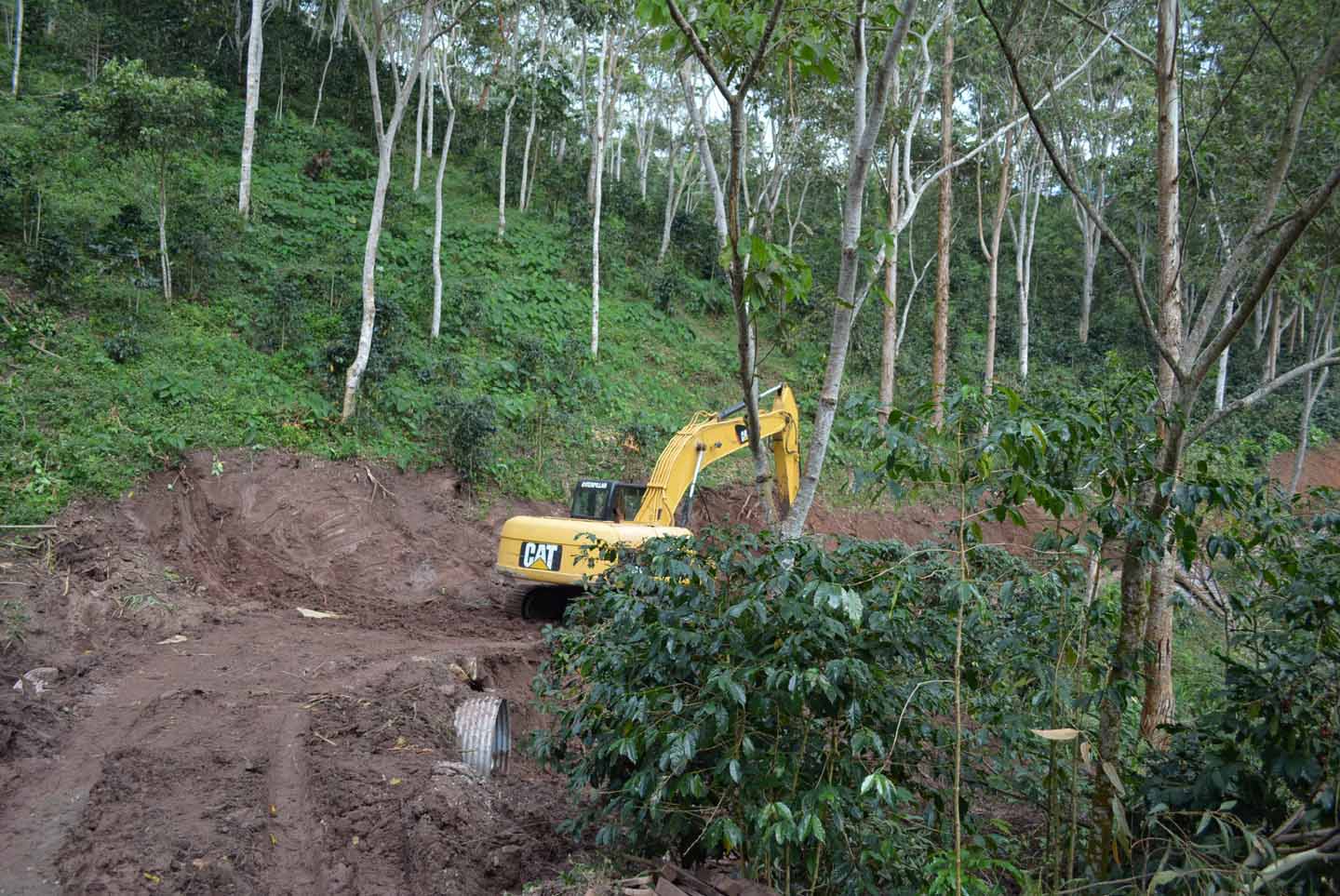
It’s lunchtime, so we head to the kitchen for a farm fresh meal of salad juice, rice, and delicious duck. The duck is tender and juicy, and is the best that I’ve ever eaten.
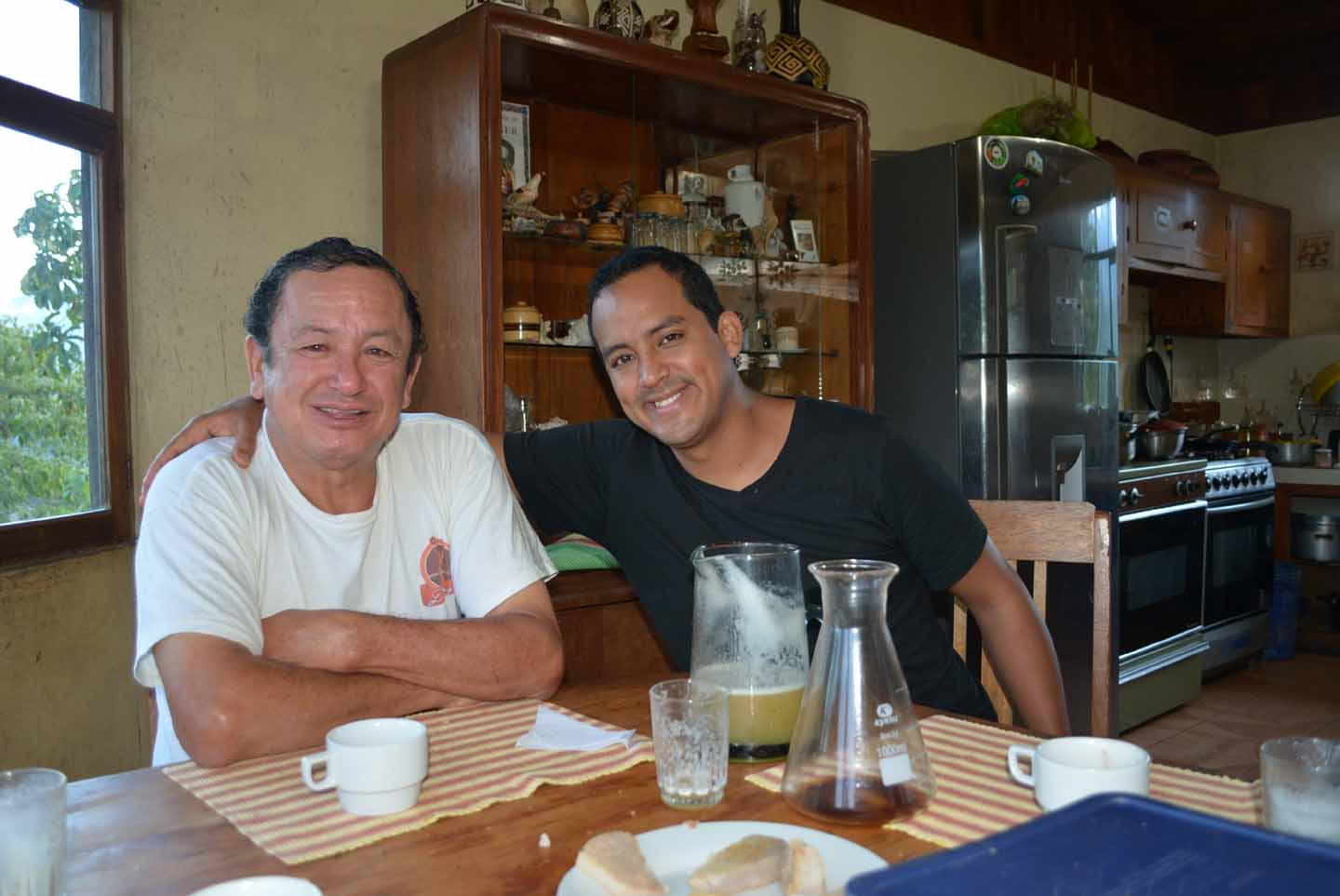


After a wonderful lunch/dinner we take a look at how everything is progressing with the harvest. A quick check of our coffee, and an afternoon of logistics etc. The work and discussions take several hours. We’re buying coffee, it’s an emotional moment, and everyone is smiling. The list is long of what needs to happen, but at this point there is a meeting of the minds, and we’ll have some excellent coffee this year. I couldn’t be happier.
It’s the end of the day, and I’m beat, but we are going to go to the coffee lab and roast samples until late. It’s a fun time, as there are several coffee students learning to be baristas hanging around after the class.
We clean some natural cured coffee for sampling. It’s rather laborious as the natural cured coffees have what resembles a raisin “skin” dried on to the coffee bean (the real coffee cherry,) so the normal lab machines for removing the parchment from the bean or “peeling” the coffee don’t work as well, and we end up having to also do it by hand.
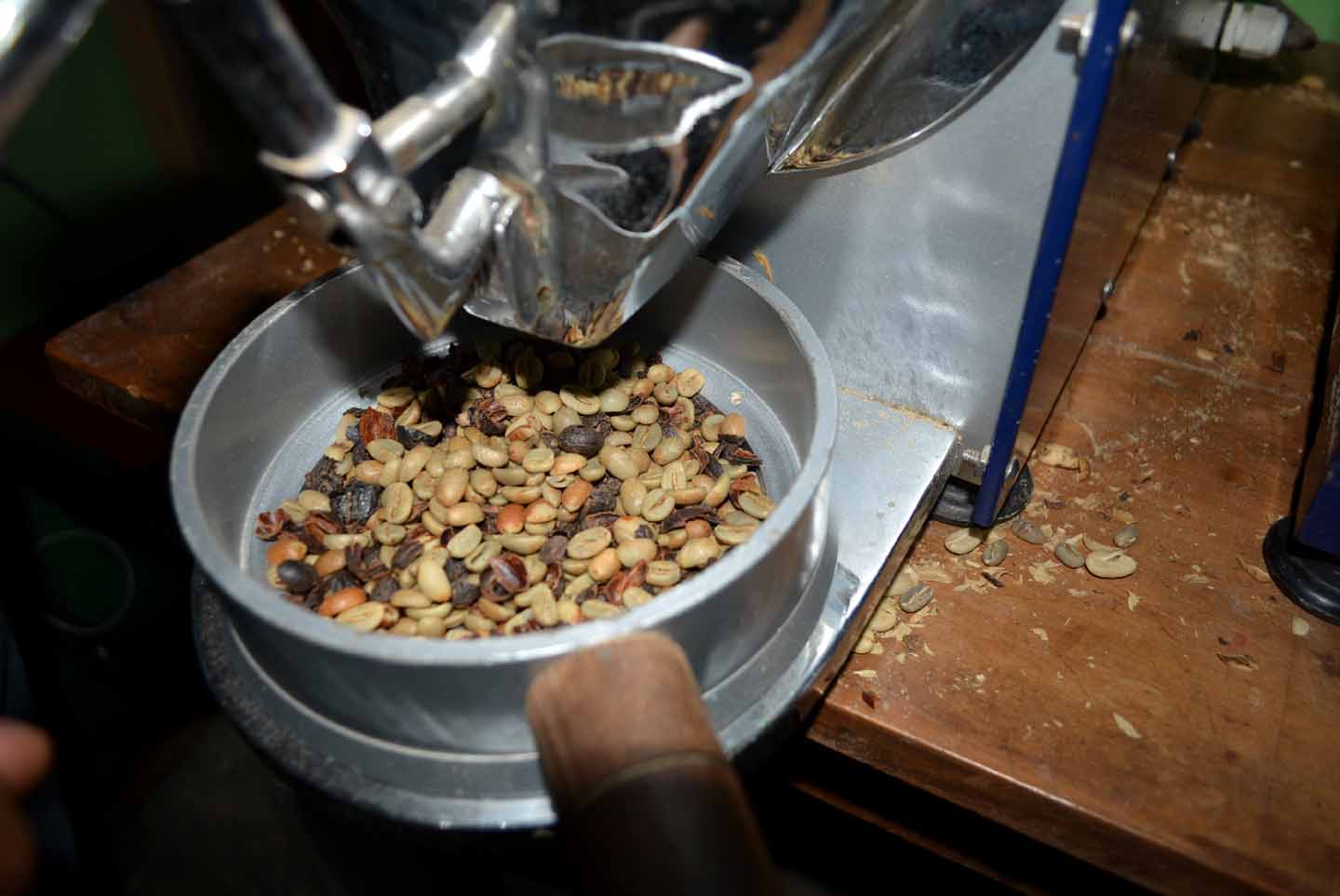


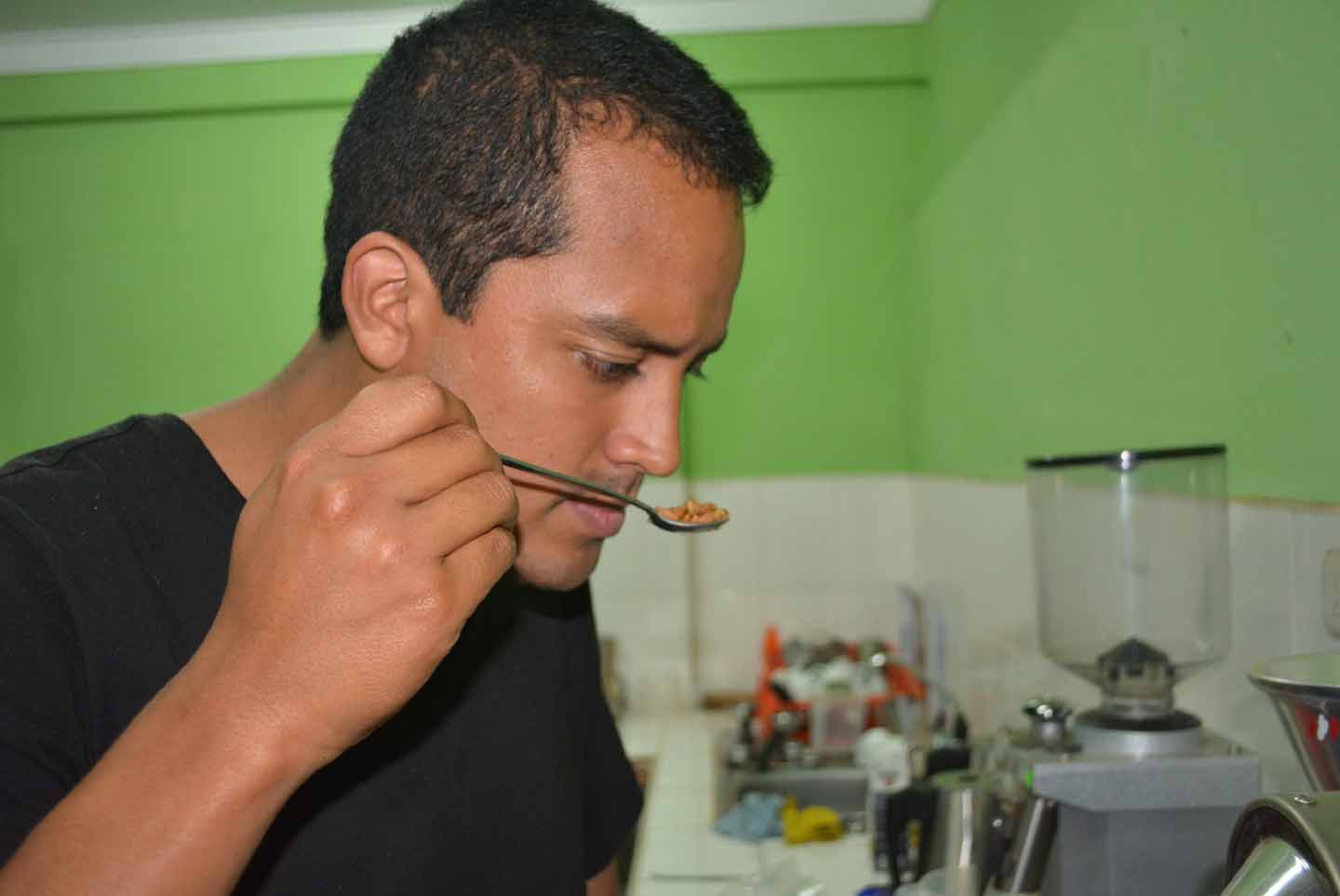
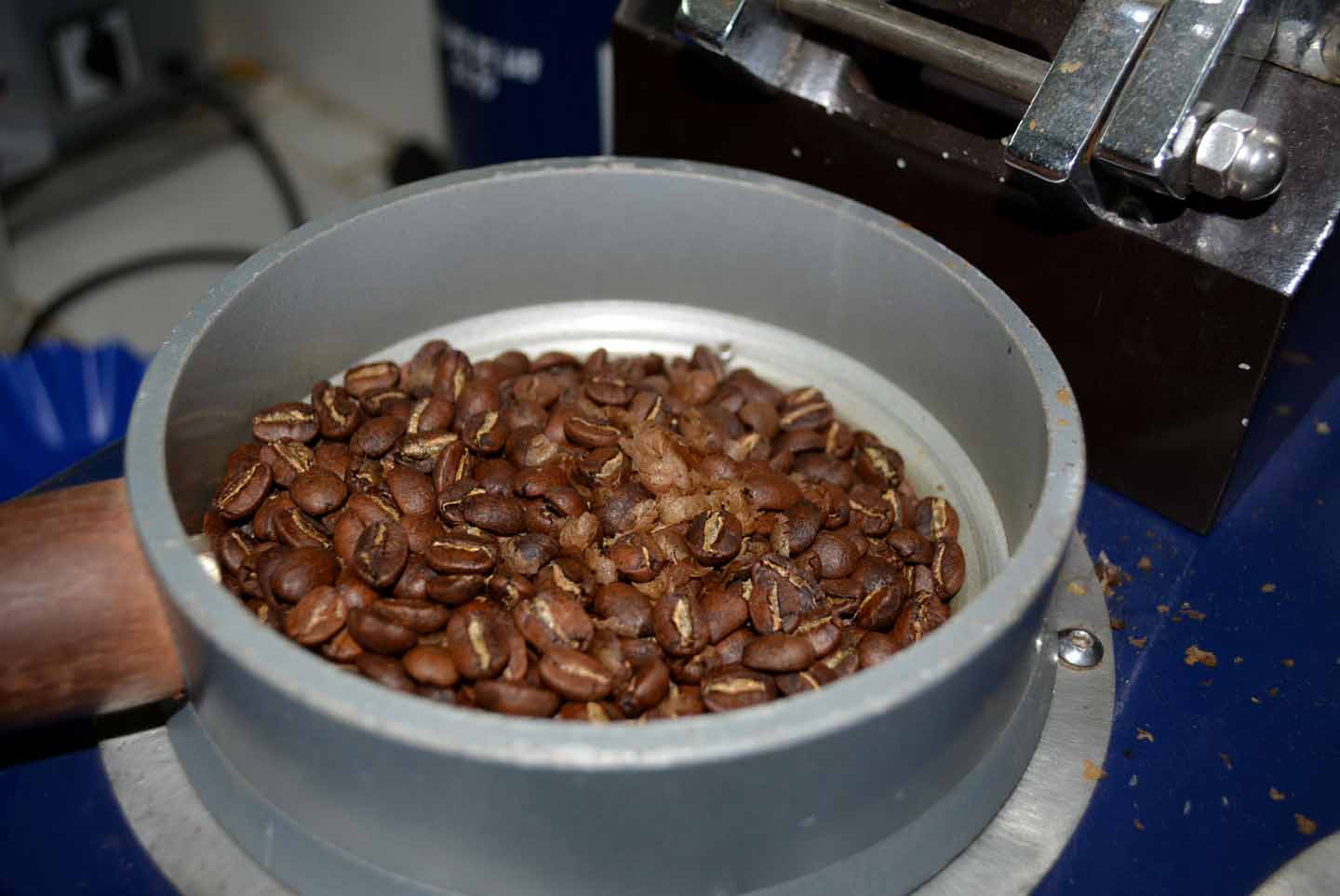
We roast several samples and taste test a couple between us and Ingrid, who works for the government agriculture department as a coffee consultant & who is staying late to help our sample work. We all agree that the samples are well…delicious.
Ingrid has worked at several other coffee coops that we know of. She’s French, her Spanish is great, and she exudes a bubbly happiness to be living in the rain forest testing coffees and working with growers.
It’s late as we clean up the lab and mark all samples etc. We have to be up at 5:00 am to beat the road crews and get to Villa Rica & make arrangements for cleaning, and processing our coffee, ready to be put into Grainpro bags for freshness and then shipped to Lima. We’re meeting with Horst Gehrmann of the FInca El Dorado, our next stop.

Please check back for Part 3 where we’ll explore Finca El Dorado, the home and coffee farm of the Gehrmann family, who migrated to this part of Peru after World War 1.
© 2015 Ben Gangloff
You might also enjoy:
Real People, Really Good Coffee: Point of Origin – Chacra D’dago
Tarapoto to Villa Rica – A Long Strange Coffee Trip (Part 1)
A Trip to the Chocolate Factory
Curibamba Workshops, A Conversation with Ignacio Medina
Peru Ranked Third for Adventure Tourism, Here’s Why
Did you enjoy this page? Have questions? Would like information on something to be posted here? Please drop us a line, or sign up for our email list in the box to the right.
